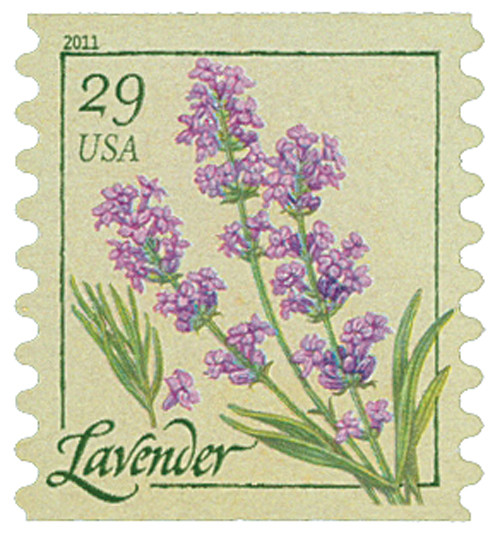
# 4517 FDC - 2011 29c Herbs: Flax, coil
U.S. #4517
2011 29¢ Flax
Herbs Coil Stamp
Issue Date: April 7, 2011
City: New York, NY
Printed By: Avery Dennison
Printing Method: Photogravure
Color: Multicolored
People in ancient Egypt carefully harvested a long slender plant with pale blue flowers and used its fibers to clothe both the living and the dead. This plant, called flax, has been used to make a cloth called linen for thousands of years. Linen was the primary fabric used for clothing in the Nile region. When the Egyptians prepared their dead for preservation as mummies, they wrapped the bodies in linen cloth made from the flax plant.
Flax, also known as linseed, has proven quite useful throughout history. The linen made from flax fibers is known for its ability to stay cool in hot weather. Flax fibers are also common in the production of paper and dye, and are even part of the American dollar. Oil can also be extracted from the seed, which has many uses. Called flaxseed oil, or linseed oil, its uses are as varied as food additives, medicine, and industrial lubricant.
Flax is not just a hardy commercial plant. Its delicate flowers inspired another of its names – “Sapphire Blue” and bloom from May through August. It easily adapts to different environments, and grows well in dry conditions (if it gets enough water in the spring). Flax’s appealing light brown color makes it a pleasing garden addition. The plant has proven its practical usefulness for thousands of years.
U.S. #4517
2011 29¢ Flax
Herbs Coil Stamp
Issue Date: April 7, 2011
City: New York, NY
Printed By: Avery Dennison
Printing Method: Photogravure
Color: Multicolored
People in ancient Egypt carefully harvested a long slender plant with pale blue flowers and used its fibers to clothe both the living and the dead. This plant, called flax, has been used to make a cloth called linen for thousands of years. Linen was the primary fabric used for clothing in the Nile region. When the Egyptians prepared their dead for preservation as mummies, they wrapped the bodies in linen cloth made from the flax plant.
Flax, also known as linseed, has proven quite useful throughout history. The linen made from flax fibers is known for its ability to stay cool in hot weather. Flax fibers are also common in the production of paper and dye, and are even part of the American dollar. Oil can also be extracted from the seed, which has many uses. Called flaxseed oil, or linseed oil, its uses are as varied as food additives, medicine, and industrial lubricant.
Flax is not just a hardy commercial plant. Its delicate flowers inspired another of its names – “Sapphire Blue” and bloom from May through August. It easily adapts to different environments, and grows well in dry conditions (if it gets enough water in the spring). Flax’s appealing light brown color makes it a pleasing garden addition. The plant has proven its practical usefulness for thousands of years.








